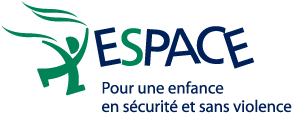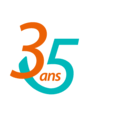Child assault
Violence against children is the expression of an abuse of power by an adult over a child or even by a child over a more vulnerable one.
Our role as adults gives us power over children. This power is part of our responsibility towards children to offer them structure and guidance, transmit values, provide affection, etc. This power is not negative in itself, it depends on how we use it. What’s important is that we use it correctly in the interest of the child.
The problem arises when we use our power in a way that does not contribute to the child’s well-being, and hurts him or her rather than raising their self-esteem. These abuses of power then turn into assaults.

Children’s Rights
For ESPACE, an aggression is the disrespect, the violation of one or multiple fundamental rights of children. Every child has rights, and it is important to recognize and respect them. ESPACE talks particularly about the right to feel:
– SAFE (feeling good, confident, safe from danger)
– STRONG (we are talking about the inner strength in each person, like courage, determination, intelligence, self-confidence, etc.)
– FREE (the possibility to make choices for ourselves and be able to act without any constraint
Children are more vulnerable to violence
Three important factors make children more vulnerable to violence and make them an easy prey for aggressors:
- Lack of information
Children generally have little or misleading information about assaults and even less about their rights and resources than can help them. Adults are often uncomfortable with the subject, or they do not want to scare the child; they may themselves be misinformed and transmit information that is incomplete, erroneous or based on stereotypes. For example, they only talk about the “stranger danger”, when in fact child abusers are often part of the child’s entourage.
As a result, and unfortunately, the more children lack information and strategies to face this reality, the more they are vulnerable.
- Dependence on adults
It is natural for children to depend on adults to meet their emotional, psychological, physical and economic needs (to be fed, educated, loved, learn to live in society, etc.). One would expect then that children are properly cared for. Unfortunately, there are adults that take advantage of children’s trust and dependency to abuse their power inflicting moral or physical harm that can lead to serious consequences.
- Social isolation
Being unaware of the resources available to them and of their rights, children remain isolated and don’t know how to seek help from a worker in their daycare centre or school, or how to file a complaint with the police, or contact their CISSS or CIUSSS or the Director of Youth Protection.
The situation is even more alarming for the child victim of violence because the aggressor almost always demands to keep it a secret in order to protect himself.
To address these vulnerability factors, the CAP-ESPACE program recommends strategies that reinforce self-assertiveness, self-confidence, courage and peer support.

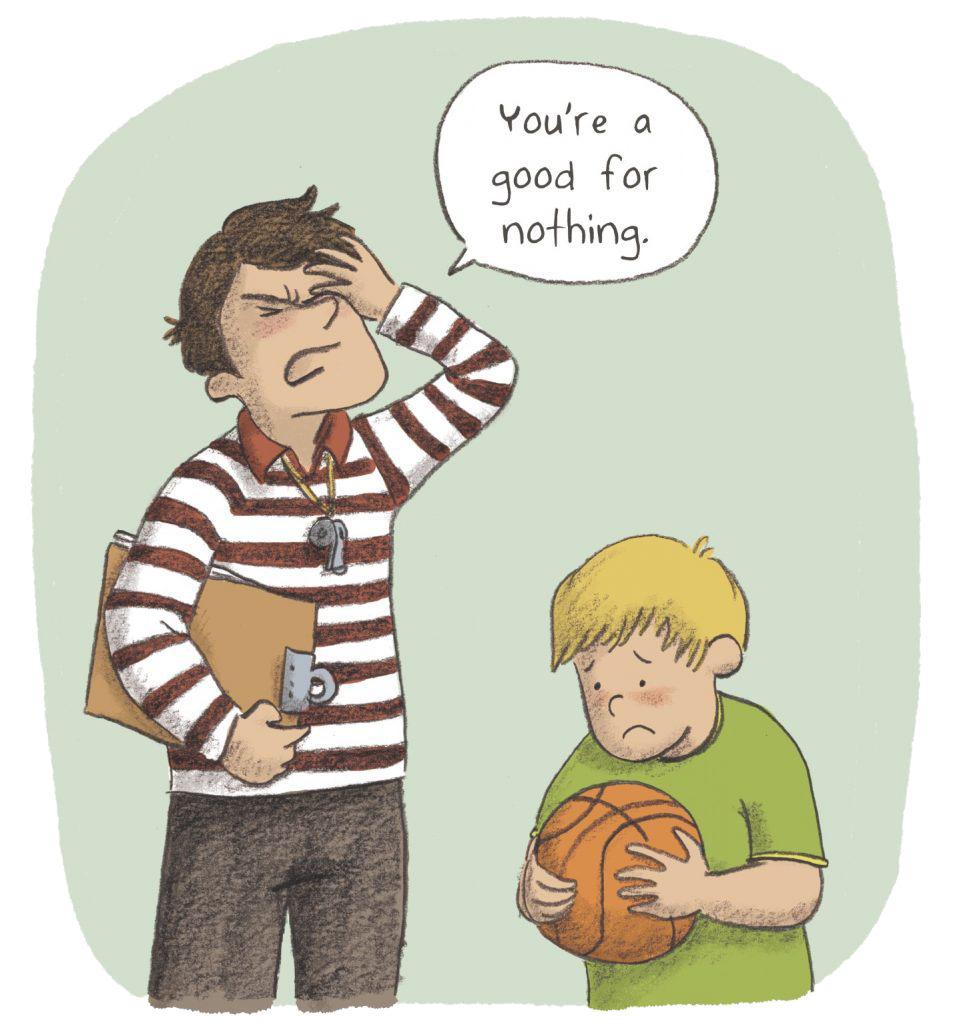
Forms of violence
Using one’s authority or power to put down, manipulate or control a child through words or actions that cause pain, fear, or humiliation, is an abuse of power. This person is subjecting the child to violence. This violence can take different forms:
Verbal
‘’ You’re good for nothing ! ’’
Anything said that humiliates or insults a person. This can take the form of demeaning comments, insults, threats, sarcasm, mocking, continuously forbidding, harassing with continuous orders, yelling and screaming, endless criticism, malicious insinuations.
Psychological
Psychological violence refers to a persistent attack on the sense of personal worth. It is any attitude, words or behaviour intended to show contempt for someone and diminish their self-esteem or undermine their self-confidence. It can take the form of rejection, terrorizing, isolating, belittling, exposing to domestic violence, indifference, exploitation, and corruption.
Physical
Any act ranging from an attack on a person’s physical integrity to putting their life in danger. Beating, biting, burning, wounding, choking, hitting with your fists, feet or an object, shoving, throwing to the ground, shaking violently, confining and tying up are all forms of physical violence. Physical or genital mutilation, beyond any cultural notion, is part of physical violence. The most extreme physical assault is obviously homicide, murder.
Negligence
Negligence is when parents or other caretakers of a child do not ensure the basic conditions essential for the child’s emotional, psychological and physical development. It can mean caring for a child in an inadequate or dangerous way. Negligence is characterized by the absence or lack of gestures essential to a child’s development, by a chronic lack of care with regards to health, hygiene, nutrition, education, supervision, a lack of attention or affection.
Sexual abuse
Sexual abuse is an act that is sexual in nature, with or without physical contact, committed by an individual without the consent of the victim, or in some cases, especially when children are involved, through emotional manipulation or blackmail. It can take various forms – rape with or without penetration, sexual fondling, sexual contact, incest, prostitution, juvenile pornography, pedophilia, sexual harassment, exhibitionism, voyeurism, etc. – it is an act of power and domination of a criminal nature.
Bullying
When a person tries to diminish, manipulate, control or humiliate a child with words or gestures that scares or hurts them, makes them sad, she is committing violence against the child by abusing her power. It’s called bullying. Bullying can include psychological, physical or sexual assaults, threats, constraint exclusion, rejection, gossip as well as spreading rumors and insults.
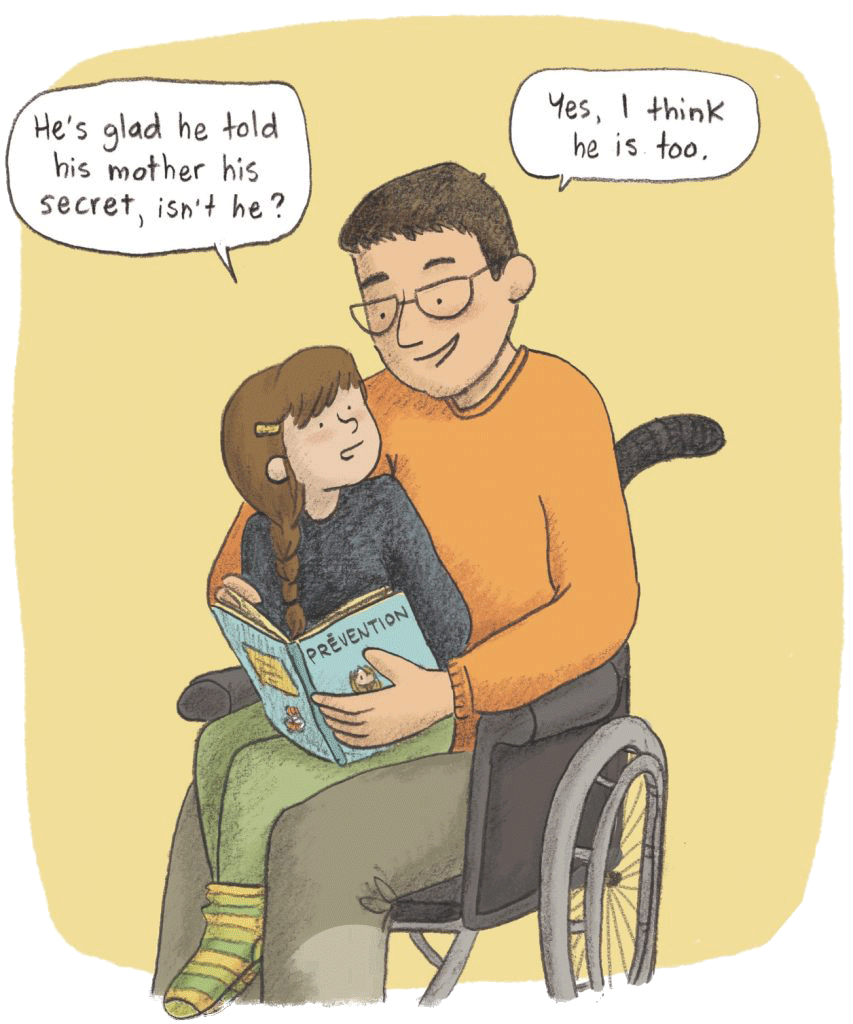
The importance of prevention
Why do prevention?
- To reduce children’s vulnerability;
- To create safe and healthy milieus;
- To protect children before violence occurs;
- Because violence harms a child’s development;
- Because there are many effects and possible long-term consequences to violence: coping difficulties, relationship problems, replication of violent acts, substance abuse, dropping out of school, suicide, etc.
How to prevent and act?
Doing prevention is helping a child build their self-confidence, autonomy, strength, and affirmation. It is reducing their vulnerability towards violence and bullying. Within your daily actions, you can give your child a good part of the baggage that will allow them to face the different forms of violence that can occur in their life.
How?
- Talking with them about their rights and their responsibility to respect the rights of others ;
- Taking their experiences and their feelings seriously ;
- Believing in their abilities. This shows that you trust them ;
- Focusing on their strengths and what they can do by themselves to try and solve the problem.
Our Practical Guide for Parents contains numerous tools and information that can help with daily prevention in an effective way.
Helping a child
What if a child is a victim of violence?
If you believe that a child you know is a victim of violence, it is your responsibility as an adult to verify what is going on and offer your help.
Detecting the signs
While prevention is important, it is equally important to catch the signs that a child might be a victim of violence. Wounds can be clues of physical violence. But for children who are victims of negligence or verbal, psychological or sexual violence, the traces might not be visible.
Be on the lookout for sudden behavior changes in a child (sudden anger, fatigue, nightmares, aggressivity, withdrawal, back to wetting their bed, sucking their thumb, etc.). They are often signs that something is wrong.
Taking the first steps
- If the child doesn’t come to you, take the first steps;
- Create a trusting and open environment;
- Do not force the child to confide in you, but rather make them feel that you are there to listen to them if necessary;
- Follow the child’s pace and needs;
- Respect the child if she or he doesn’t want to talk about it;
- Return to see the child if your concerns persist
Listening to and believing the child, without judgement, is already a crucial step in his problem-solving process.
Did you know ? A child who was sexually assaulted spoke to an average of 7 adults before receiving help…
If the child confides in you
- Listen to, reassure and believe the child, without judging or minimizing what he or she is going through;
- Control, as much as possible, your reactions and emotions;
- It is important that the child feels surrounded and encouraged;
- Avoid taking charge of everything and impose your solutions;
- Trust the child; often enough, his or her ideas can guide you in your process;
- Let the child know that you are there for her or him and that you will not abandon them;
- If a child confides a violent situation, verify if they are safe. Do you have a little or a lot of time to act?
Get help if necessary
The situation can seem difficult to resolve. It is possible that you may not feel comfortable continuing the process. It is then important that the child knows that you will not abandon him or her. Let them know that you are going to give him or her all the help needed: if it’s not yours, it will be someone else’s.
If necessary, don’t hesitate to refer to the various resources available to you or the child. For more information, check out our Practical Guide for Parents, and visit our Resources Section.
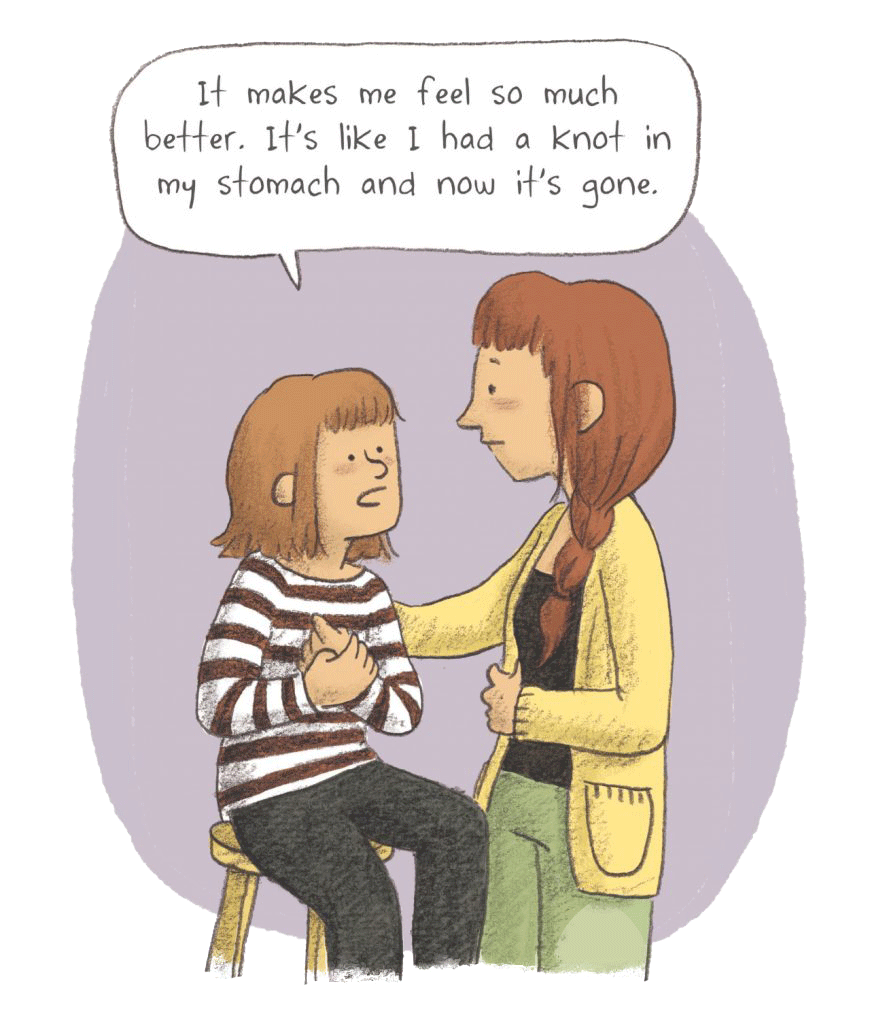
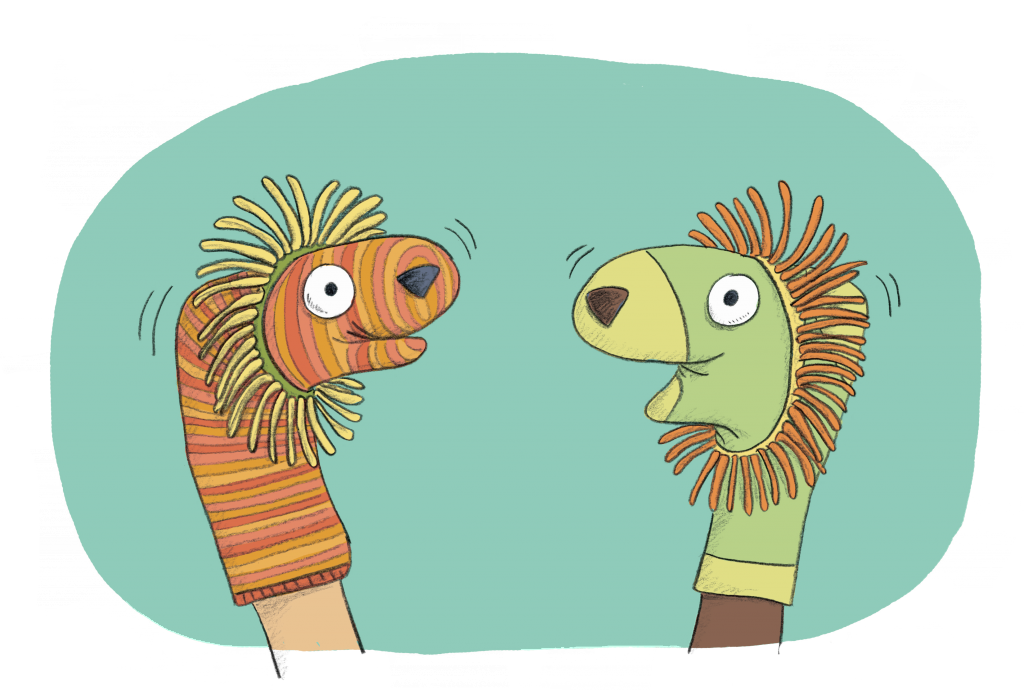
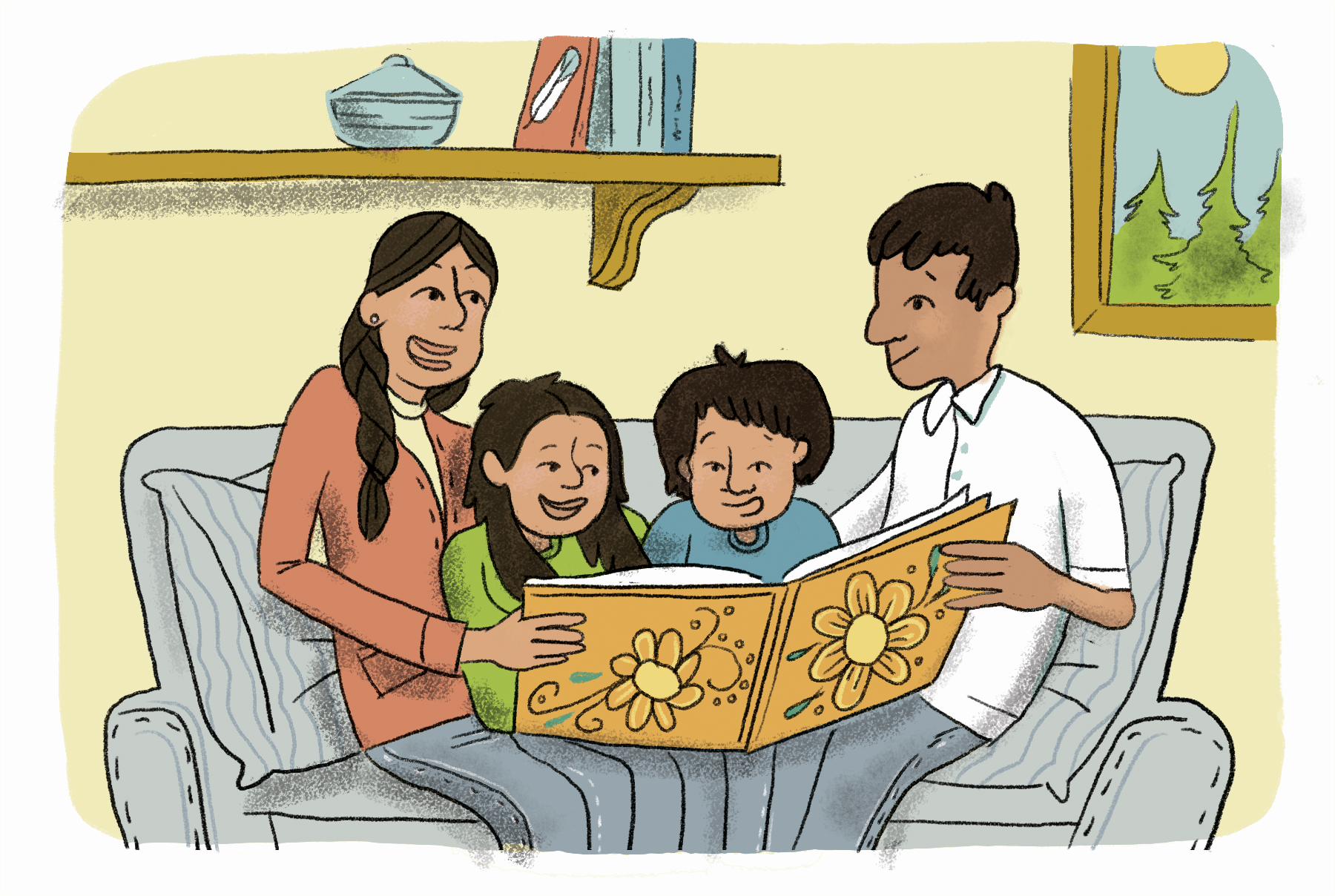
Prevention tools
The ESPACE tools
During our workshops, many tools are handed out to the children, the educational personnel and the parents by the ESPACE organizations. These tools allow them to continue the work of violence prevention with the children. They can also initiate interesting discussions with your child!
Our Activity Books
The ESPACE activity books are fun and adapted to the children’s age. They were designed in accordance with the objectives of the educational program.
Activity books for educational personnel:
Activity books for children:
Practical Guide for Parents
This practical guide helps parents who want to be better equipped to do prevention with their children.
Prevention with Indigenous peoples
The Practical Guide for Parents has also been adapted in fact sheets for prevention with Indigenous peoples.
- Violence against children…
- Prévention
- Clues to detect if your child is a victim of violence
- When a child confides in you…
- Help for you and your child
If your child is being bullied
Here are the informative fact sheets to better understand what bullying is, how to prevent it and how to intervene if your child is a victim.
- Children, violence, bullying / Your child is being bullied…
- Respect: a good start in life! / Playing to prevent violence
- Using our power in a constructive manner / Preventing violence and bullying
- Verify your doubts / Put youself in the position of the child
An online game for children!
In addition to the tools distributed during our workshops, a fun and educational game addressing violence prevention against children has been developed by the ROEQ:
FUTURAVILLE: Together against violence!
Intended for children 9 to 12 years old, this game has been designed to inform and equip children to recognize and respond to violence if they witness or experience it. The content is adapted for children and has been designed so that they can play alone or accompanied by an adult.
FUTURAVILLE is available on the web and as an app for Apple and Android devices.
Visit the Youth Zone to discover it or show it to a child in your entourage!
Help resources
Whether it be for information, support or denunciation, several resources exist to help and accompany adults and children. Here are some:
General Help resources
- 911: Emergency line
- 811: Info-Santé
- 811 #2: Info-Social
- Integrated Health and Social Services Center: You can contact a center in your territorial or local health and social services network to find out about support services for parents and children.
Resources for victims of violence
Centre d’aide et de lutte contre les agressions à caractère sexuel (CALACS)
Sexual assault centers for women and adolescents aged 14 years and over who are victims of sexual assault. (most websites are only available in French but can be translated)
Crime Victims Assistance Centre (CAVAC)
The CAVAC provides front-line services to anyone who is victim of a crime and their loved ones, as well as witnesses to a crime.
SOS violence conjugale
SOS violence conjugale is a non-profit organization whose mission is to help ensure the safety of victims of intimate partner violence (IPV) and that of their children throughout Quebec.
Marie-Vincent Foundation
The Marie-Vincent Foundation supports children and adolescents who are victims of sexual and physical violence by providing them with the services they need all under one roof.
Association québécoise Plaidoyer-Victimes (AQPV)
This association’s mission is to promote and defend the rights and interests of crime victims.
Centre de Ressources et d’Intervention Pour Hommes Abusés Sexuellement dans leur Enfance (CRIPHASE)
CRIPHASE was created specifically to help men aged 18 and over who have experienced sexual assault in their childhood.
Director of Youth Protection (DYP)
A Director of Youth Protection (DYP) is appointed for each region of Quebec. He or she is responsible for enforcing the Youth Protection Act (YPA) in his or her region. The YPA applies to children who are in situations that compromise or may compromise their safety or development. These children are in difficulty and in need of protection. In the YPA, the term “child” refers to a person under the age of 18. Therefore, this act applies to adolescents as well.
Information on the DYP
How to report a situation
Support, help and comfort
Tel-jeunes
Help service for youth in Quebec. The website has many interesting tools for youth, while offering help and support via phone, email, chat or text. The services are free and confidential as well as being available 24/7, 365 days a year.
Kids Help Phone
Support service for children and youth of all ages available across Canada, 24 hours a day, 7 days a week.
Ligne parents
Phone service for parents. Offered by specially trained individuals, this service is free, confidential, bilingual and accessible 24 hours a day, 7 days a week.
Schools and childcare environments
Often, the schools or the childcare environments have people who can advise you: the psychologist, the social worker, the nurse, the teaching or educational staff and the Principal or Director.
Community organizations and self-help groups
There are many organizations and self-help groups that respond to different needs. How do we find them? Consult the Info-Social line at 811, ask your CLSC or the ESPACE organization in your region. They can inform you and refer you to the right resources.
Internet and cybersecurity
Cybertip
Pan-Canadian Internet reporting service for sexually exploited children. This site allows you to report, by Internet or phone, criminal acts such as: child pornography, Internet luring, child exploitation through prostitution, child sex tourism, child trafficking, etc.
Projet CybeRéflexion
(website only available in French)
Campaign created by the Table de concertation jeunesse de Beauharnois-Salaberry, of which ESPACE Suroît is a member, with the objective of raising awareness among young people and their families about healthy habits to adopt in connection with new technologies, to demystify the various issues related to cyberspace, and to work on prevention with young people.
Centre Cyber-aide
Through preventive and interactive conferences and workshops, the Centre Cyber-aide aims to inform and equip the public with the safe and healthy use of ICTs via the web. Especially adolescents, who are fervent users of new computer technologies.
MediaSmarts
Website that provides parents, adults and youth with the tools they need to safely navigate the Internet.
Internet safety resources
Website that provides parents, school staff and children with resources for prevention regarding the Internet. This site was created by the RCMP and various police forces.

